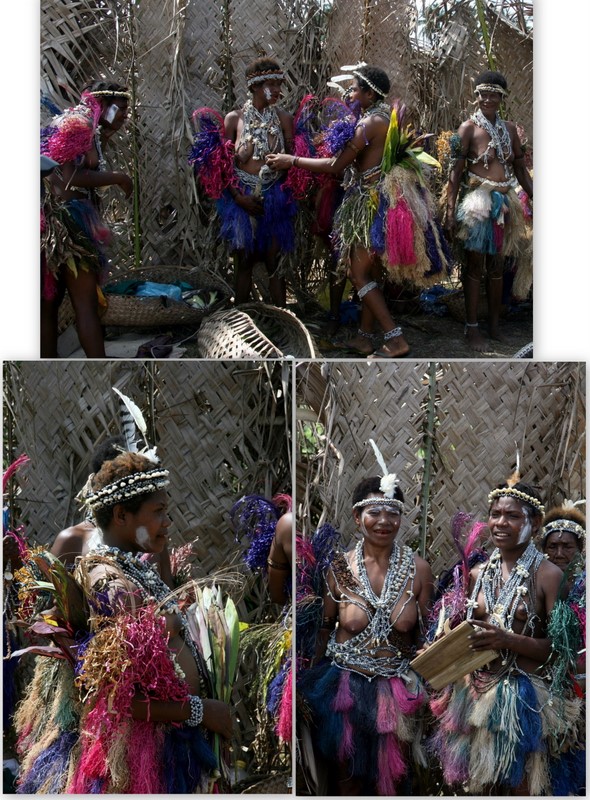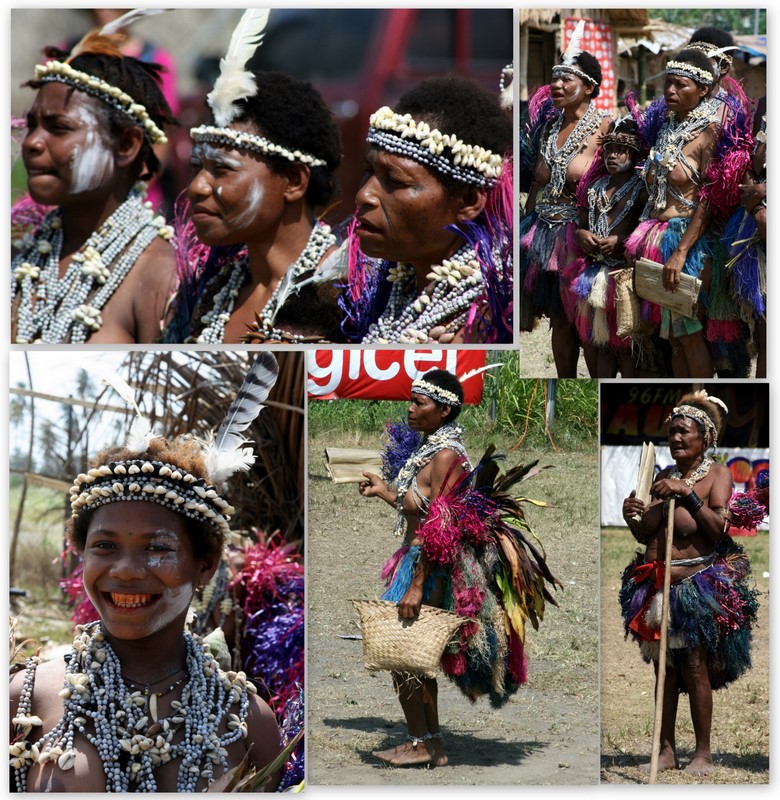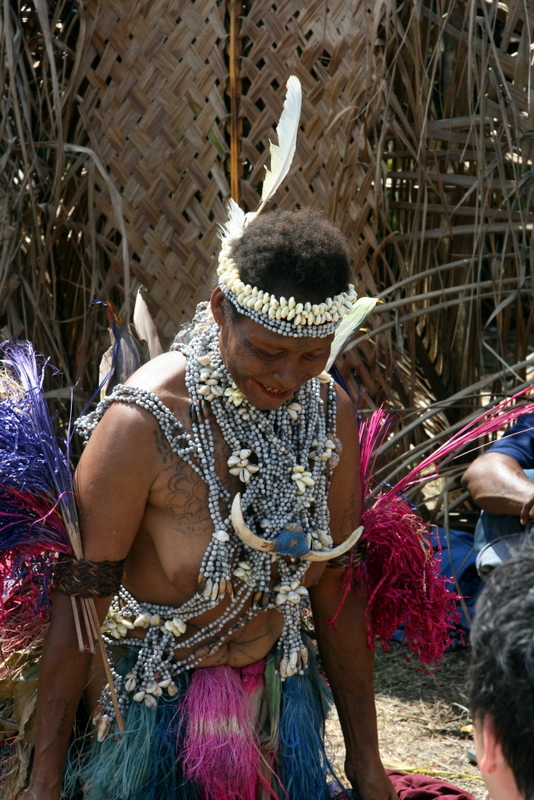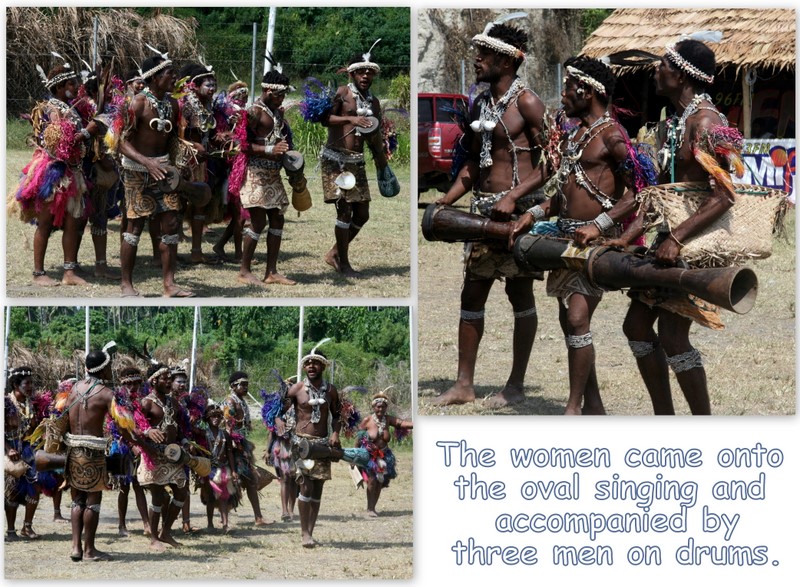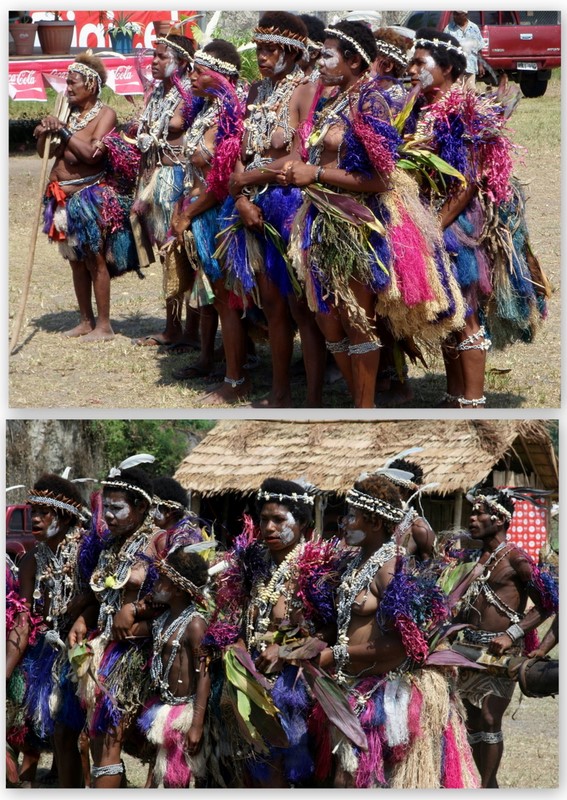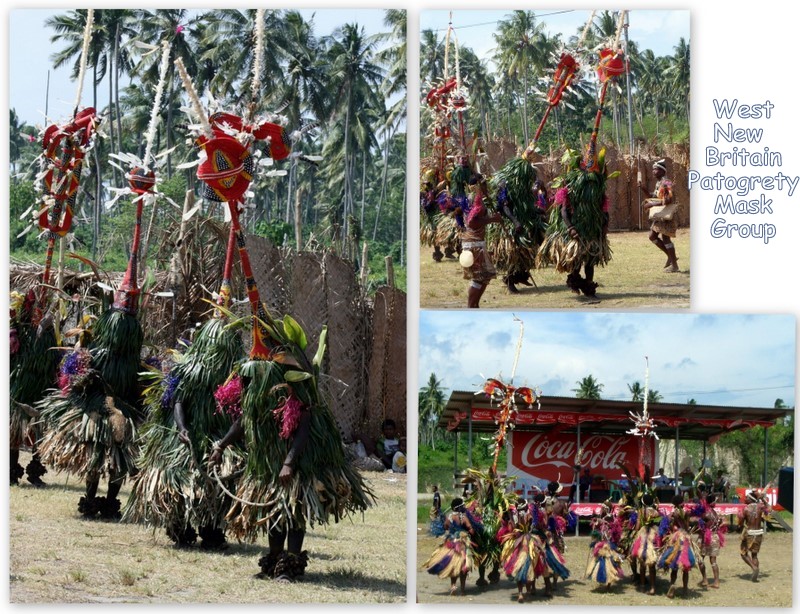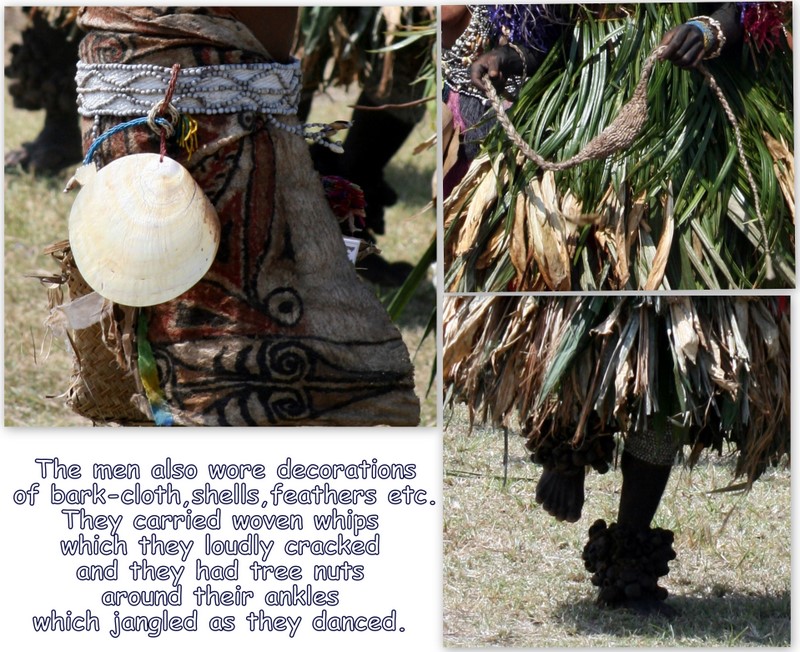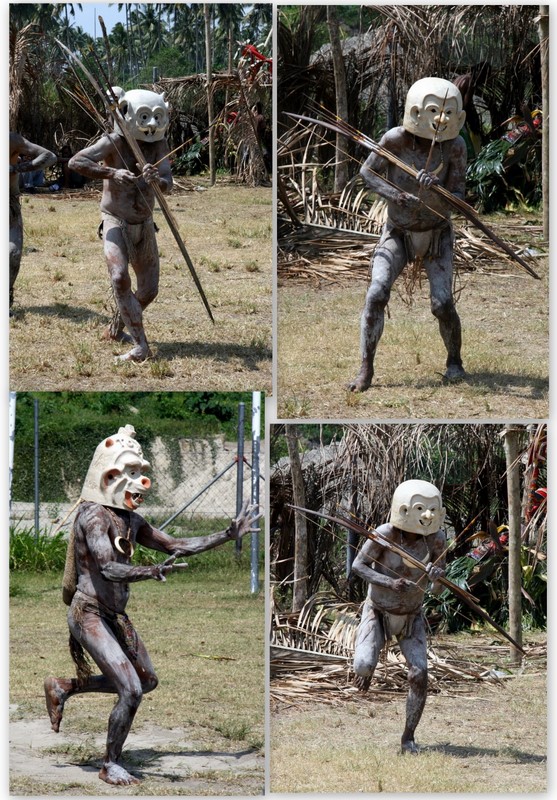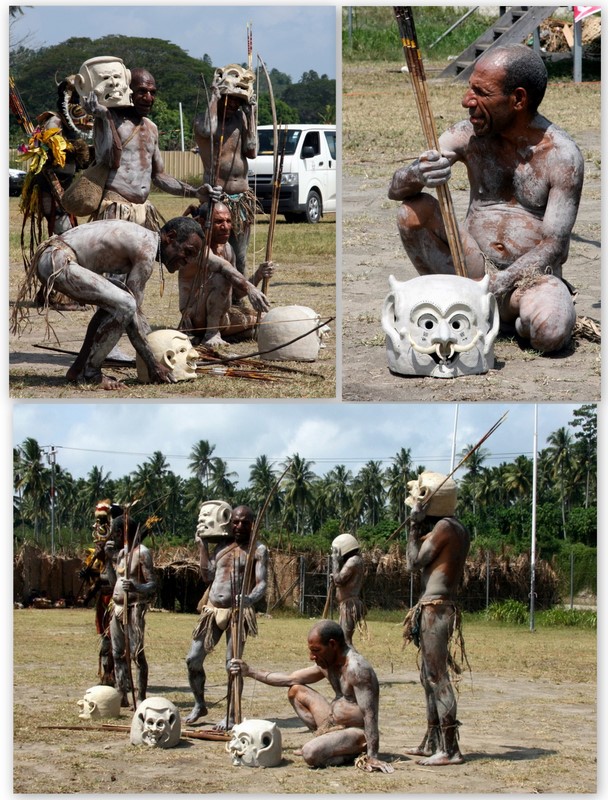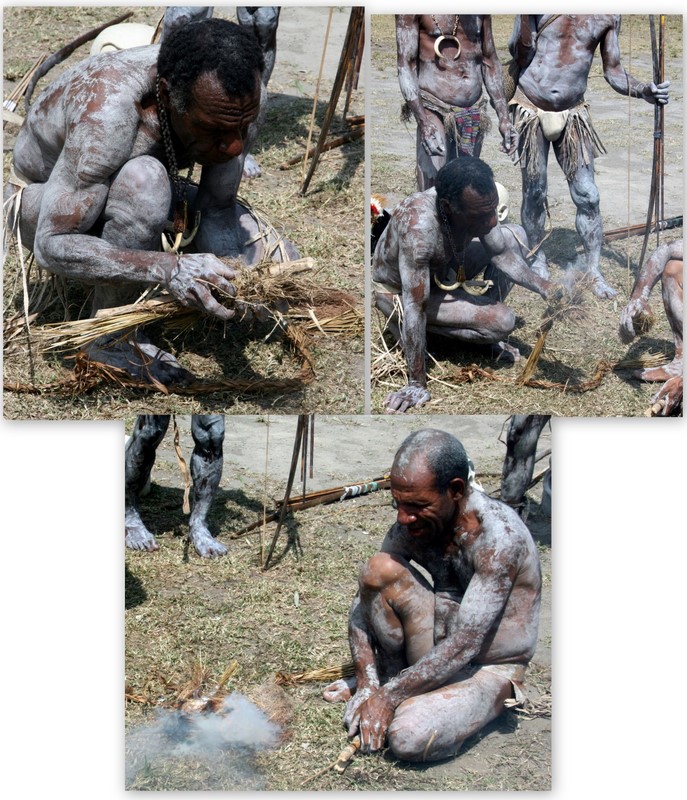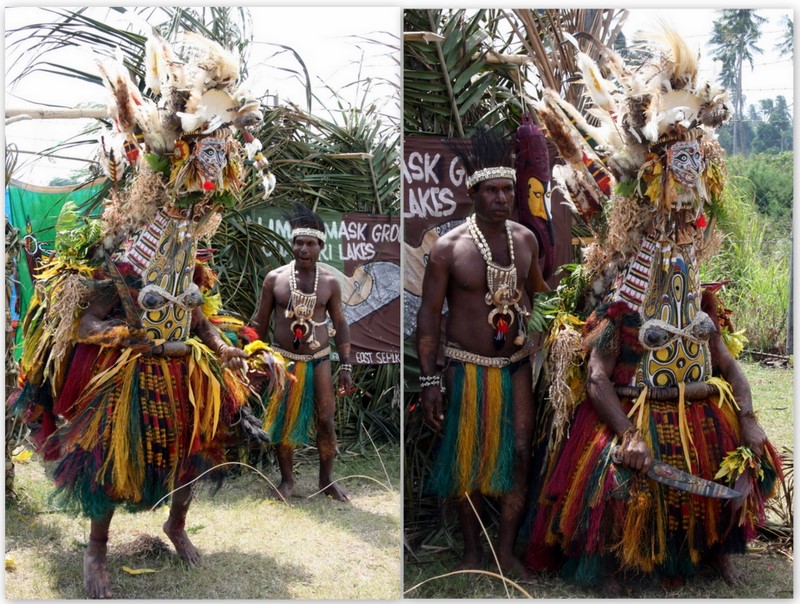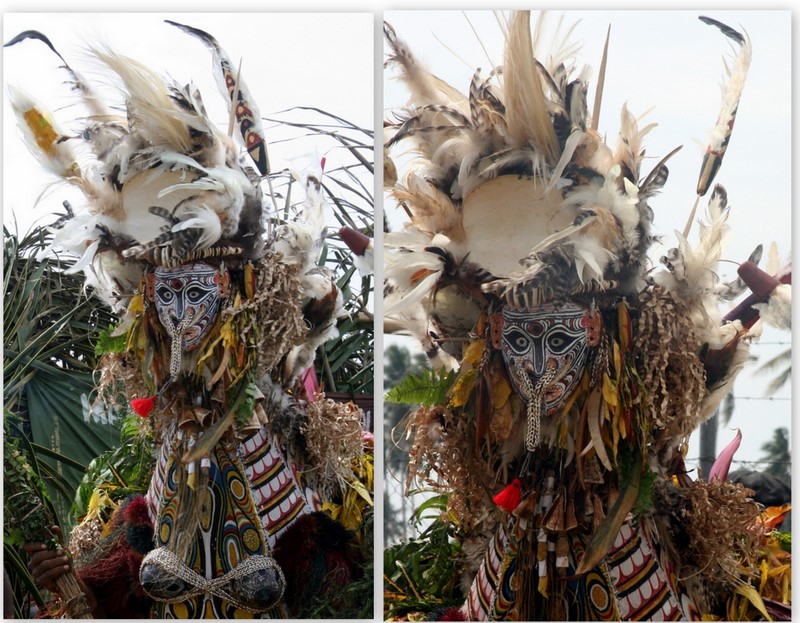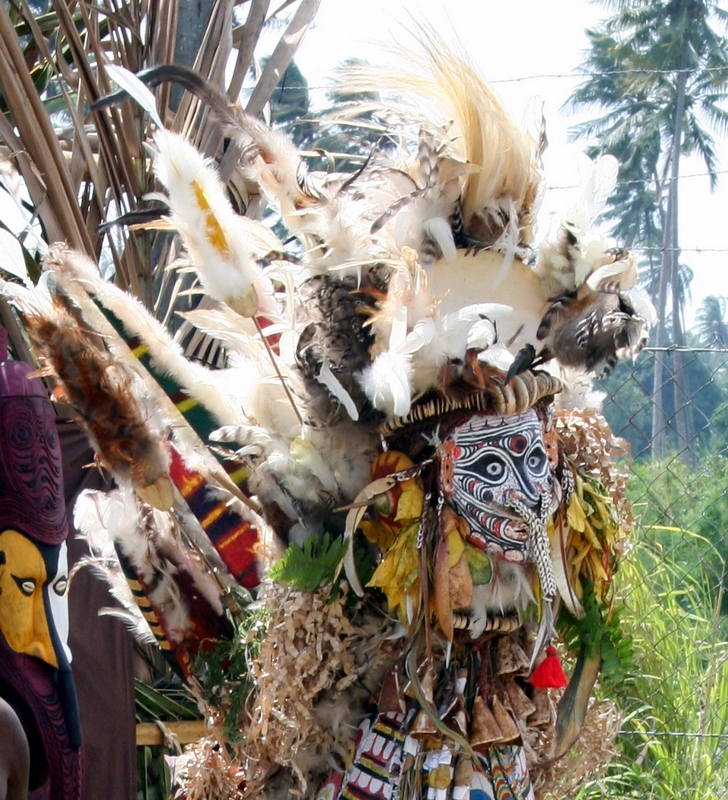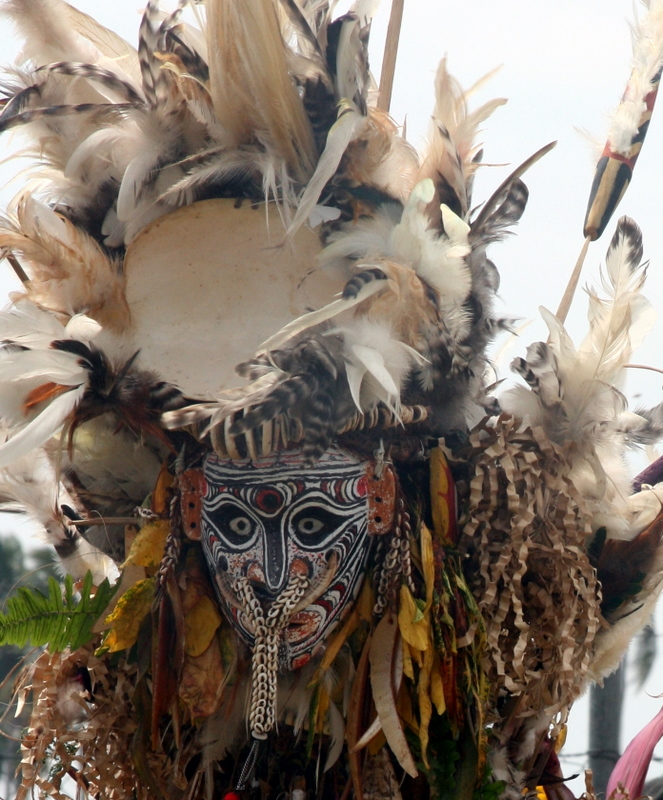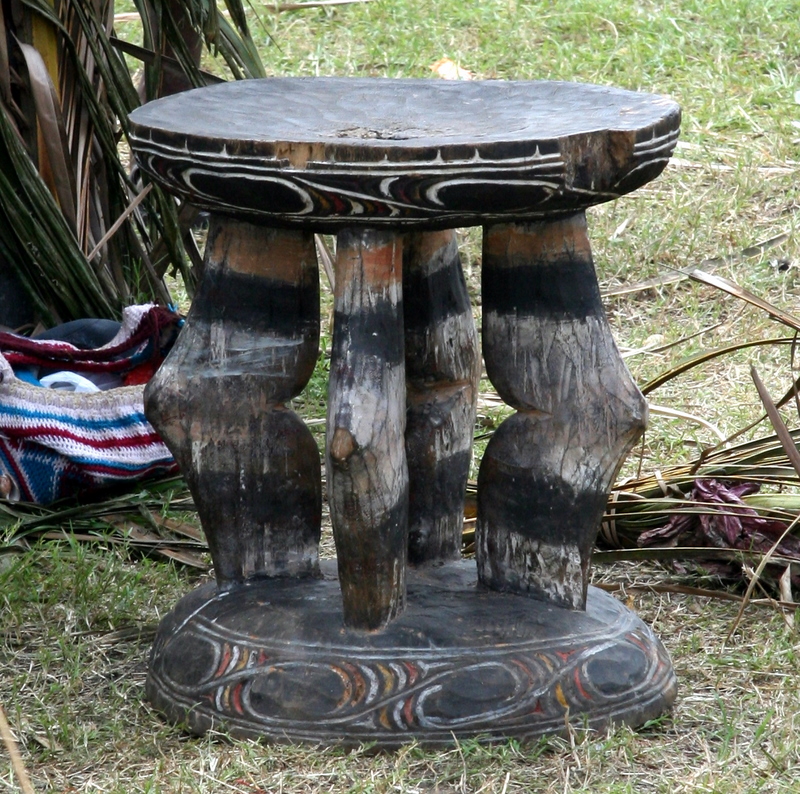Mask festival – Part 3
by admin on Aug.08, 2010, under Uncategorized
Finally got time to finish posting about the Mask Festival. We are in Brisbane for a break at the moment and the time is flying by!
On the Saturday morning Nick and I went up to the Mask Festival. We watched three different cultural performances.
The first performance was by the West New Britain Patogrety Cultural Group. This was the only group to include their women in the performance. The women and girls dressed and prepared outside the ‘fenced off’ area – as this was a sacred area for men only.
The women ranged in age from young girls to older ladies and wore costumes that were very colourful and made from beads, feathers, leaves etc.
Some of them were also tatooed.
The women then came onto the oval and sang and clapped – ‘calling’ the masked group of men to come out and perform. Their singing was beautifully harmonised. A couple of men on drums accompanied the women.
When the men came out, it was obvious that their masks had several differences to the Tolai Duk-Duk.
The head-dress was taller and colourfully woven, they had seeds/nuts (similar to gumnuts) around their ankles and these made a significant noise. They also carried ‘whips’ woven from a string-like material and they made a loud whiplike noise when used during their dance.
The dance obviously told a story with the men and women dancing together, the whips cracking seemingly to bring the women to order, and at the end dancing in harmony with each woman/girl partnering a masked man – this is my interpretation of the dance and I am not sure how accurate it is! Either way it was very interesting and different to any others I had seen.
The next performance was by the Asaro Mudmen.
The Mudmen come from Asaro – just outside the town of Goroka in the Eastern Highlands Province of Papua New Guinea. They were the first of two mainland groups which we saw perform.
Legend has it that the mudmen were defeated by an opposing tribe and forced to flee into the Asaro River. They waited until dusk before attempting to escape. The enemy saw them emerge from the muddy banks covered in mud and thought they were spirits. Most tribes in Papua New Guinea are very scared of spirits, so the enemy fled in fear, and the Asaro Mudmen were victorious. On their way home they ran into another tribe. By then the mud was all dry and cracked and they must have looked frightening. The other warriors got scared and fled. After that episode, aware of the fearful impression it had made, the warriors of Asaro always covered themselves with mud before going to war, keeping the illusion alive.
This performance was held in silence – no music, clapping etc. The Mudmen crept out with their bow and arrows and stealthily and agilely performed for us.
Today they perform in a peaceful manner with no warlike sounds or moves. I actually found them quite cute and even a little bit cheeky! – although some local children ran away in fear when the mudmen came close to them.
This masked character also performed with the mudmen – not sure of its significance!
At the end of their performance, the mudmen removed their (obviously heavy!) masks. It was apparent these men were not all young which I found quite remarkable given their very lean and fit build and the agility they showed during their performance.
They also demonstrated traditional fire-making – accompanied by a couple of flute-like instruments.
The mudmen were my favourite performers!
The last performance we watched was by the East Sepik Mask Cultural group. This group also came from the mainland (East Sepik Province -the Sepik River area). Rather than perform out on the oval, they performed in a small defined area in one corner of the grounds – probably due to the fact that the very elaborate mask had no holes to see through – thus denying the wearer any means of sight! An ‘assistant’ aided the masked man in his movements around the defined space.
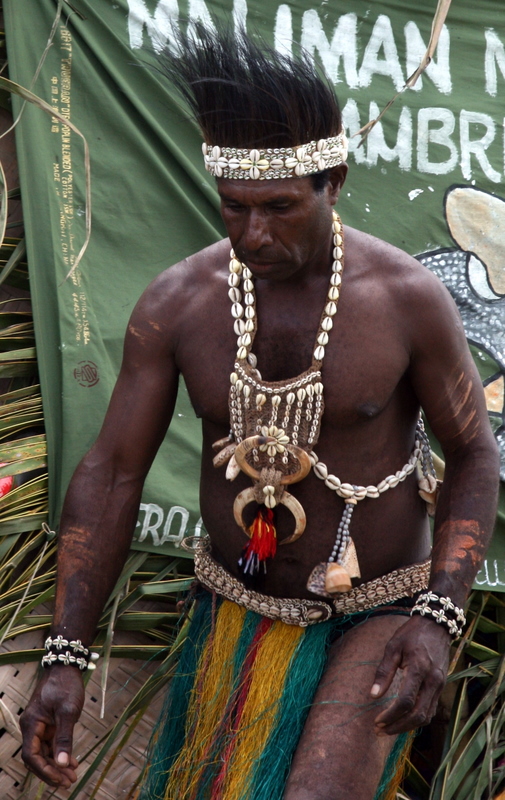
Those are cassowary feathers around the assistant’s head!
There are mask-making villages all along the Sepik. The villagers keep small gardens and the women fish. They trade fish to the inland Sawos people for sago flour, the starchy pith of the sago palm, which is the main staple of the Sepik diet. There is a small cash economy along the Sepik and the people sell fish, as well as carvings for cash. The middle Sepiks have a common ancestry, but each village is independent and this is reflected in their art, including their masks. Every village carves in a distinctive style.
The men carve masks from soft wood, although some are made of clay over-modeled onto turtle or coconut shell. They mix paints from earth pigments and charcoal. The masks are decorated with shells, pig tusks, and cassowary feathers.
Few masks are worn directly over the face, which explains the lack of holes for eyes. Some are fastened onto a large cone-shaped wicker framework for a dance costume called a tumbuan. Raffia is knotted into the bottom hoop for skirting and flowers, fruit and leaves added on for color and power at the time of the ceremony. Other masks are made only for display, most often in the men’s Haus, to attract powerful and useful spirits.
We were amazed by the detail and decorativeness of these masks.
Check out the huge shell!!
I also thought this little carved stool was worthy of a photo! The masked tibuan sat on it as part of the performance!
The mask Festival was a wonderful cultural experience which we thoroughly enjoyed.
